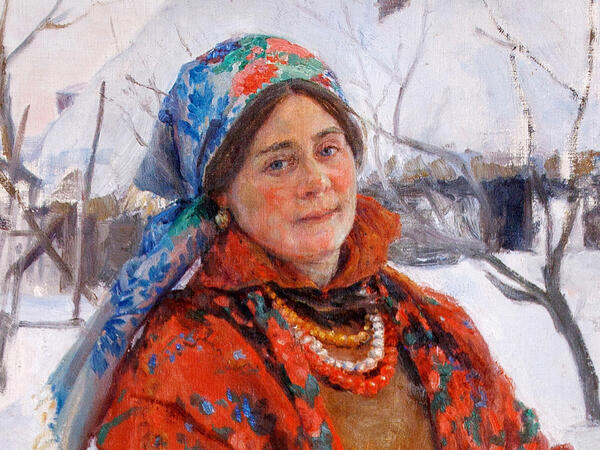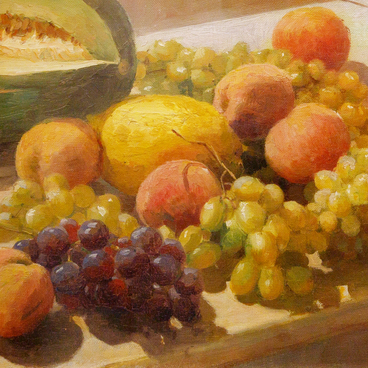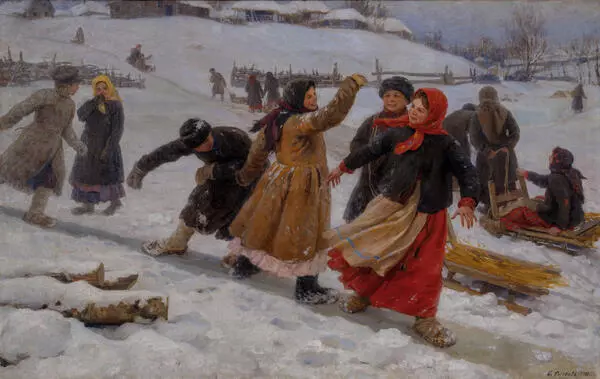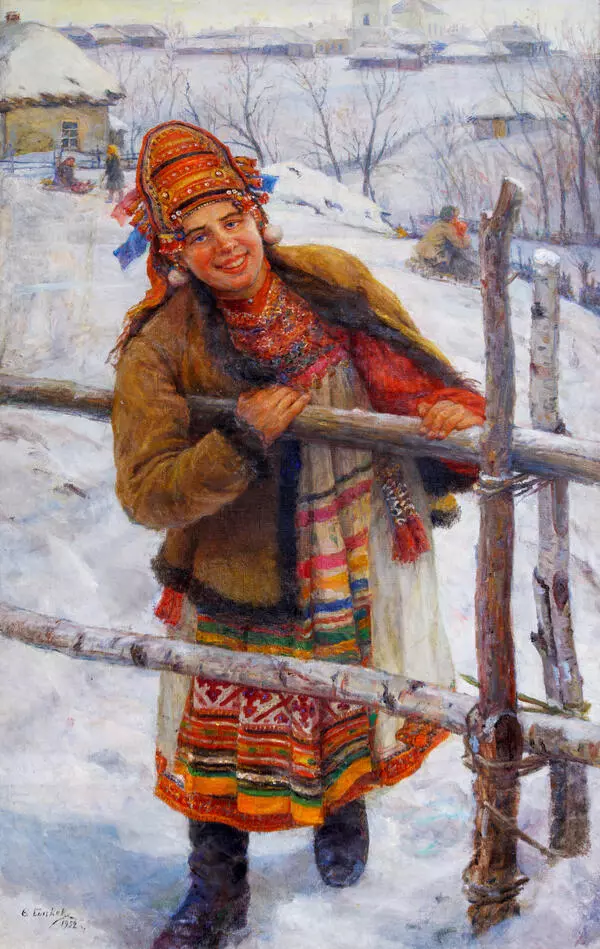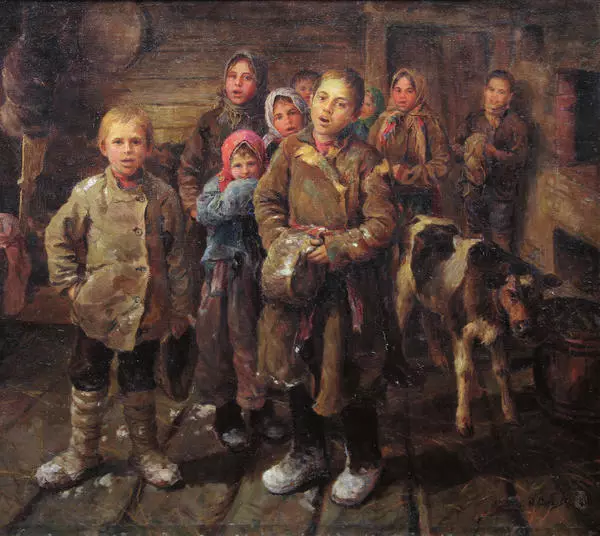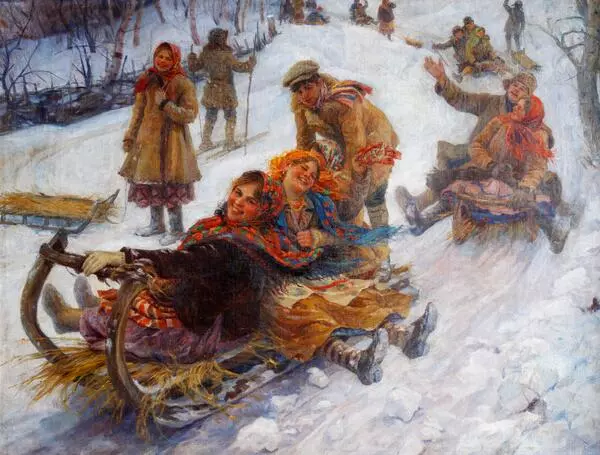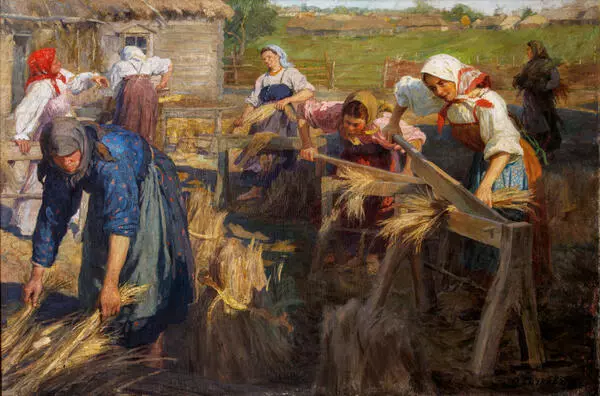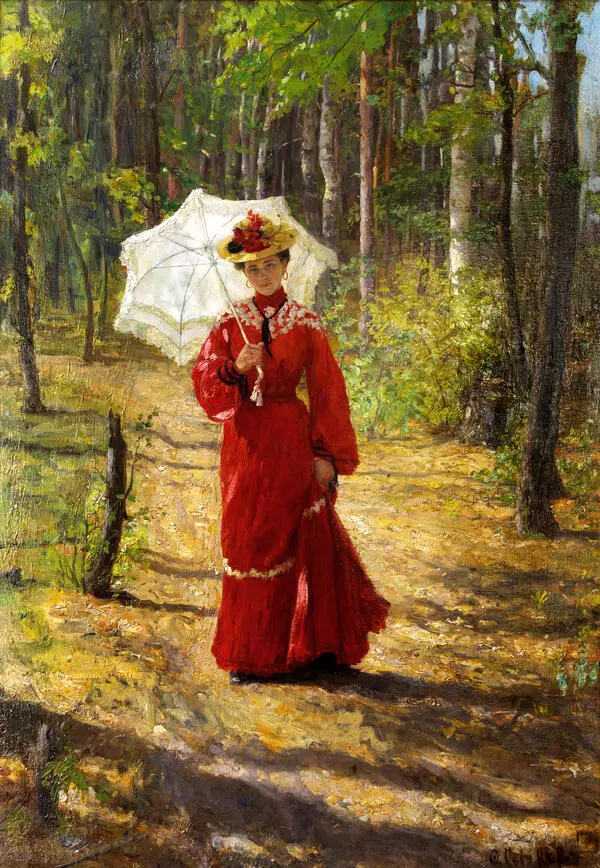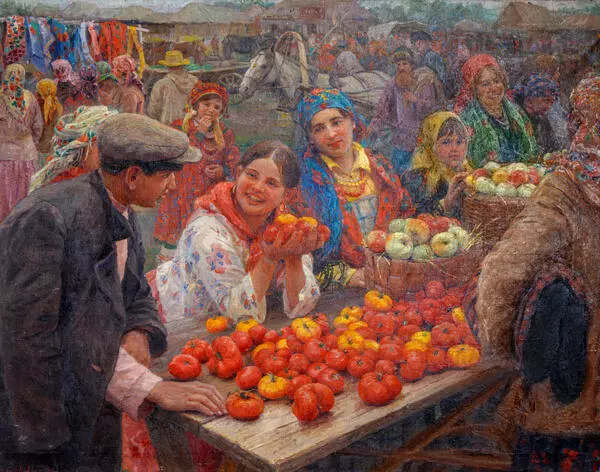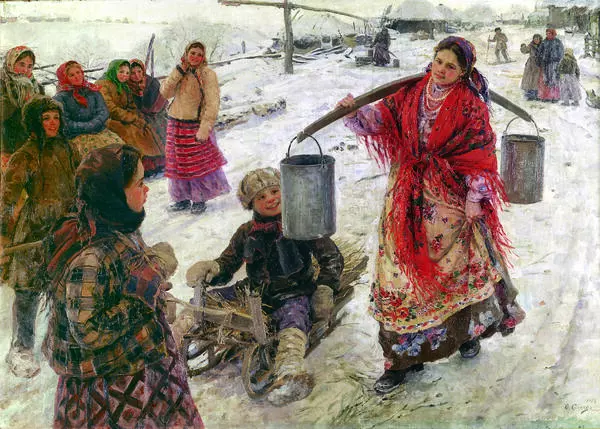The painting ‘Young Woman’ is not a portrait of a specific person but a ‘portrait type’. The artists depicted typical representatives of different social status such as workers, priests, and merchants in their ‘portrait types’. Fedot Sychkov depicted a Russian peasant woman in this masterpiece. He emphasized the qualities of a woman that he considered the main ones like spiritual beauty, calmness, and strength of character. The model looks directly at the viewer; her dignity and peace of mind are seen in her gaze.
The artist’s wife sat for the portrait a “molodukha” — a young married woman who has not had any children yet. Lydia Sychkova supported her husband all the time as she was often a model for his works and helped him with finding the scenery for his paintings. Sychkova collected and preserved the clothes and jewelry that Fedot Sychkov painted in his works — later she donated the collection to the museum.
Together they enjoyed going to different fairs. While the painter made sketches for his future works, his wife bought shawls, scarfs, pieces of elegant calico, satin, cambric, marquisette, and then she sewed clothes from these materials using the “Triumph” sewing machine. She made skirts, shirts, sundresses, and aprons — all those elements of Russian costume that the painter needed to create the images of the peasants.
In addition, Lydia Sychkova and her husband visited various art exhibitions. She was aware of all the events in the artistic life of the capital and the local countryside. Journalists, artists, and fans constantly came to Sychkov in Kochelayevo. In the Soviet times, the painter was known not only in Mordovia but also abroad. At that time, Lydia Sychkova ensured that nothing distracted her husband from work and planned his daily routine. The republic is grateful to her for the fact that after the painter’s death she preserved the integrity of the collection that she inherited and did not give it away to other museums and private collectors.
The museum archive also has many photos of Lydia Sychkova made by the artist in different years. The master also treated his wife’s relatives with great respect. He painted portraits of her mother Evdokia Ankudinova several times and in 1915 created a portrait of Mikhail Ankudinov, his wife’s brother. These two paintings are housed in the Yaroslavl Art Museum.
The artist’s wife sat for the portrait a “molodukha” — a young married woman who has not had any children yet. Lydia Sychkova supported her husband all the time as she was often a model for his works and helped him with finding the scenery for his paintings. Sychkova collected and preserved the clothes and jewelry that Fedot Sychkov painted in his works — later she donated the collection to the museum.
Together they enjoyed going to different fairs. While the painter made sketches for his future works, his wife bought shawls, scarfs, pieces of elegant calico, satin, cambric, marquisette, and then she sewed clothes from these materials using the “Triumph” sewing machine. She made skirts, shirts, sundresses, and aprons — all those elements of Russian costume that the painter needed to create the images of the peasants.
In addition, Lydia Sychkova and her husband visited various art exhibitions. She was aware of all the events in the artistic life of the capital and the local countryside. Journalists, artists, and fans constantly came to Sychkov in Kochelayevo. In the Soviet times, the painter was known not only in Mordovia but also abroad. At that time, Lydia Sychkova ensured that nothing distracted her husband from work and planned his daily routine. The republic is grateful to her for the fact that after the painter’s death she preserved the integrity of the collection that she inherited and did not give it away to other museums and private collectors.
The museum archive also has many photos of Lydia Sychkova made by the artist in different years. The master also treated his wife’s relatives with great respect. He painted portraits of her mother Evdokia Ankudinova several times and in 1915 created a portrait of Mikhail Ankudinov, his wife’s brother. These two paintings are housed in the Yaroslavl Art Museum.

